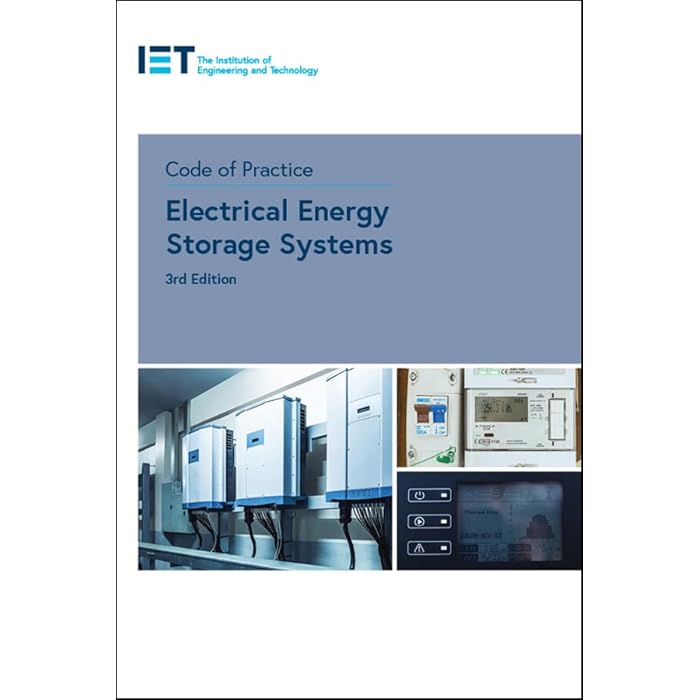Description
A **Code of Practice for Electrical Energy Storage Systems (EESS)** provides guidelines and standards for the safe installation, operation, and maintenance of energy storage systems, such as batteries and other energy storage technologies. These systems are critical in supporting the integration of renewable energy sources and ensuring grid stability.
While the exact content of the code may vary depending on the region and authority, typical components of a Code of Practice for Electrical Energy Storage Systems include the following areas:
### 1. **General Safety Requirements**
– **Risk Assessment**: Identifying and evaluating risks associated with electrical energy storage systems, including potential hazards like fire, explosion, and electrical shock.
– **Electrical Safety**: Ensuring proper insulation, grounding, and protective measures to prevent electrical hazards during installation and operation.
– **Mechanical Safety**: Addressing risks related to physical stability, fire prevention, and structural integrity of storage units.
– **Fire Safety**: Outlining protocols for dealing with fires, including fire prevention, detection, and suppression measures.
– **Emergency Response**: Establishing procedures for responding to emergencies, including evacuation plans, first aid, and disaster recovery.
### 2. **Installation Guidelines**
– **Site Selection**: Identifying suitable locations for energy storage systems to ensure safety and efficiency, with considerations for proximity to power sources, accessibility, and ventilation.
– **Electrical Connections**: Proper wiring, circuit protection, and integration with the power grid to avoid faults or short circuits.
– **Battery Storage Configuration**: Guidelines for the physical layout and design of battery banks, including clearances, ventilation, and accessibility.
### 3. **Performance and Efficiency Standards**
– **System Sizing**: Ensuring the storage system is correctly sized for the intended application, considering factors like energy demand, capacity, and battery type.
– **Energy Management**: Monitoring and controlling the charging and discharging cycles to optimize efficiency, minimize losses, and prolong the lifespan of the storage systems.
– **Performance Monitoring**: Installation of systems for real-time performance tracking and diagnostic monitoring of the storage equipment.
### 4. **Maintenance and Testing**
– **Routine Inspections**: Scheduled inspections for detecting wear and tear, battery degradation, and other issues that could compromise safety or performance.
– **Testing Protocols**: Procedures for testing the electrical and mechanical components of the storage system to ensure they are functioning as expected.
– **Battery Replacement and Disposal**: Guidelines for safe removal, replacement, and recycling of old or damaged batteries.
### 5. **Regulatory Compliance**
– **Standards Compliance**: Ensuring compliance with international and national electrical codes, such as those outlined by organizations like the National Fire Protection Association (NFPA), IEC (International Electrotechnical Commission), and UL (Underwriters Laboratories).
– **Permitting**: Detailed guidance on obtaining permits and certifications required for installation, operation, and decommissioning of energy storage systems.
– **Data Security**: If applicable, ensuring that systems that rely on digital interfaces (e.g., smart energy storage) comply with data protection and cybersecurity regulations.
### 6. **End-of-Life Considerations**
– **Decommissioning**: Guidance for the proper decommissioning of energy storage systems, including safe removal and disposal of batteries and associated components.
– **Recycling**: Ensuring that batteries and other materials are disposed of or recycled in accordance with environmental standards to prevent harm to the environment.
### 7. **Training and Certification**
– **Training Programs**: Providing training to personnel involved in the installation, maintenance, and operation of energy storage systems.
– **Certifications**: Requiring certification for technicians who are responsible for working on energy storage systems to ensure they have the required knowledge and skills to perform tasks safely.
### 8. **Interconnection with the Grid**
– **Grid Compatibility**: Ensuring that energy storage systems can safely and efficiently integrate with the local or national power grid, supporting functions like peak shaving, load balancing, and emergency backup.
– **Grid Protection**: Setting out requirements for protection systems that disconnect storage units in case of faults or irregularities in the grid.
### Key Examples of Codes and Standards Globally
– **IEC 62933** (International Standard): Specifies requirements for electrical energy storage systems and their integration with the grid.
– **UL 9540** (United States): A standard for energy storage systems and equipment, covering performance, safety, and testing.
– **NFPA 855** (United States): A fire safety standard for energy storage systems, focusing on fire protection and emergency response.
– **BS 7671** (United Kingdom): The standard for electrical installations, which may include energy storage systems in domestic and industrial settings.














































































Reviews
There are no reviews yet.